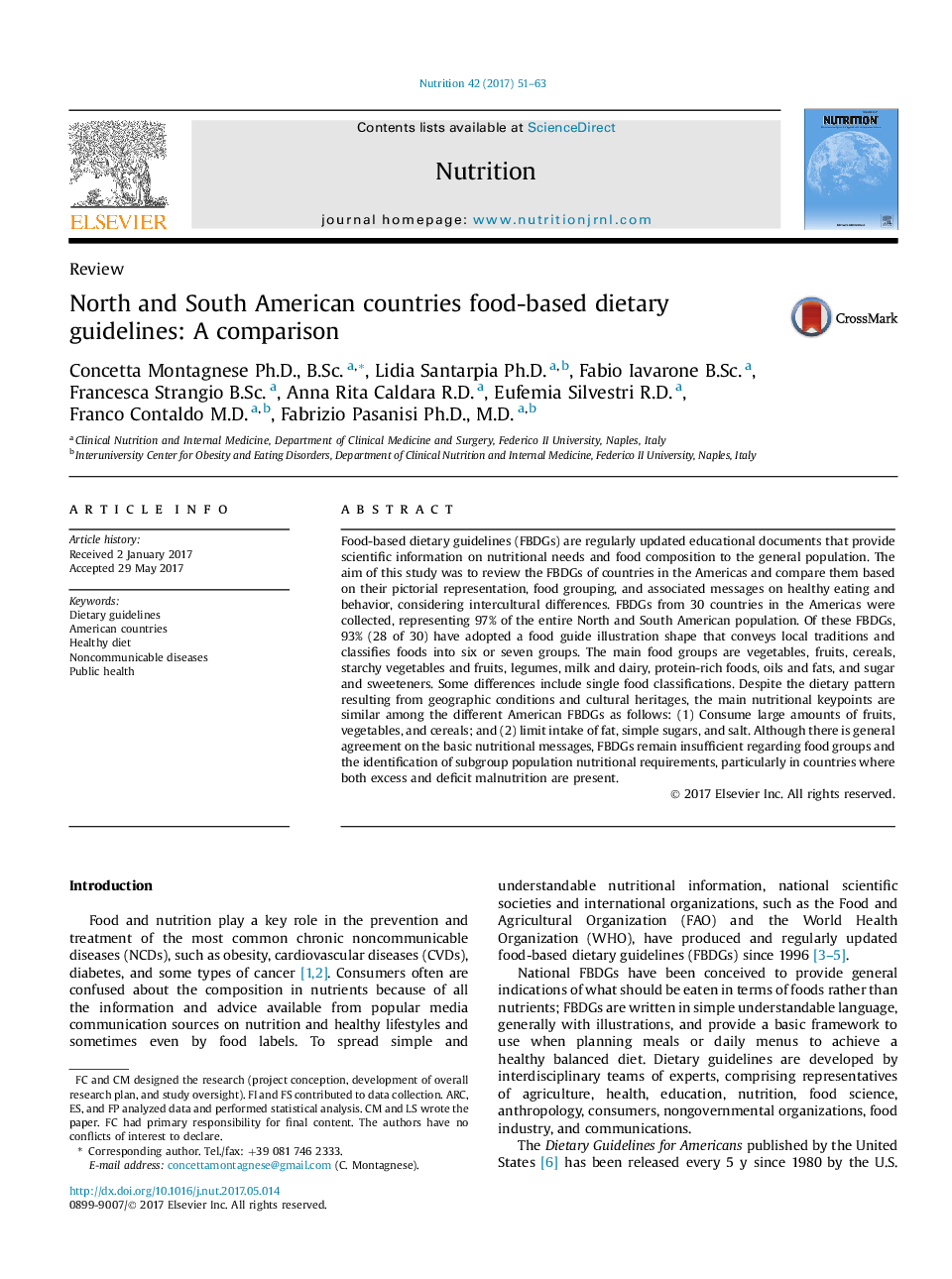| کد مقاله | کد نشریه | سال انتشار | مقاله انگلیسی | نسخه تمام متن |
|---|---|---|---|---|
| 5656855 | 1589656 | 2017 | 13 صفحه PDF | دانلود رایگان |
- Most North and South American countries have developed food-based dietary guidelines (FBDGs) for a healthy diet to prevent noncommunicable diseases.
- Despite different cultures, many similarities are present among these FBDGs.
- The efficacy and effectiveness of FBDGs are not adequately monitored.
Food-based dietary guidelines (FBDGs) are regularly updated educational documents that provide scientific information on nutritional needs and food composition to the general population. The aim of this study was to review the FBDGs of countries in the Americas and compare them based on their pictorial representation, food grouping, and associated messages on healthy eating and behavior, considering intercultural differences. FBDGs from 30 countries in the Americas were collected, representing 97% of the entire North and South American population. Of these FBDGs, 93% (28 of 30) have adopted a food guide illustration shape that conveys local traditions and classifies foods into six or seven groups. The main food groups are vegetables, fruits, cereals, starchy vegetables and fruits, legumes, milk and dairy, protein-rich foods, oils and fats, and sugar and sweeteners. Some differences include single food classifications. Despite the dietary pattern resulting from geographic conditions and cultural heritages, the main nutritional keypoints are similar among the different American FBDGs as follows: (1) Consume large amounts of fruits, vegetables, and cereals; and (2) limit intake of fat, simple sugars, and salt. Although there is general agreement on the basic nutritional messages, FBDGs remain insufficient regarding food groups and the identification of subgroup population nutritional requirements, particularly in countries where both excess and deficit malnutrition are present.
Journal: Nutrition - Volume 42, October 2017, Pages 51-63
